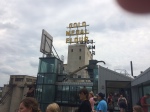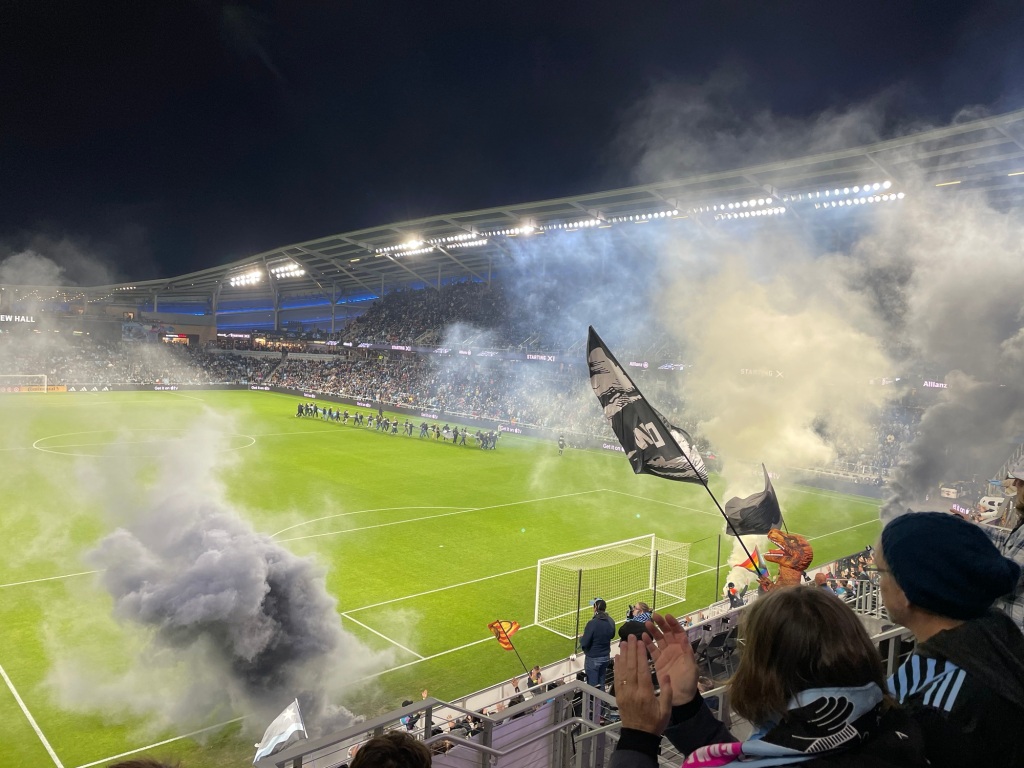My experience at the Mill City Museum and the thoughts it provoked

When I think of Downtown Minneapolis I picture glass obelisks that almost appear ablaze at sunset. Also, the thoughts of Corporations such as 3M and target, among many others, come

to mind as they insure a thriving metropolitan area. The city’s professional sports teams such as the Twins, Vikings, Timberwolves, Wild and Minnesota United (Loons) are some of the teams I loath most, myself being from Wisconsin.
However, there was a time when the St. Anthony falls, the only waterfall on the Mississippi river, powered an industry and gave the city a different identity. Although unique, it is a history similar to many American cities, built on an American staple and impacting the surrounding region. That staple is flour and the Mill City Museum, built inside the ruins of an old flour mill, in downtown Minneapolis pays homage to the industry that birthed this Midwestern city.
What is so interesting about an old flour mill? Nothing really, unless you consider that the Washburn A mill was the largest and most state of the art mill of its time. Rebuilt from the ashes of the first A mill in 1878, it was the first mill in the world to use Iron rollers instead of millstone. But that hardly makes it interesting, it’s the fact that everyone can still identify with the products spawned from this relic in time that makes it noteworthy.
First of all, Minneapolis was at the center of the flour trade, John S. Pillsbury and Cadwallander Washburn, the latter of Washburn and Crosby(Later known as General Mills) were the two biggest players, you can see the Pillsbury mill from an observation deck atop the museum. Although it was Washburn who envisioned and first built a gigantic mill on the banks of the Mississippi, Pillsbury had more early success selling his flour to global markets.
By 1880 25 mills were on the Mississippi, Pillsbury owned five and Washburn three. Combined, the two companies produced half the flour in the city , and through the years Iconic brands that we have all consumed and identify with today were born. From Betty Crocker to the Pillsbury Dough boy and Jolly Green giant, classic Americana came from the mill city. There are modest exhibits in the museum that boast some of these Boardroom conceived Icons.
Another exhibit of interest is an eighteen minute film giving an overview of the city’s history. But even as the mills were the center of a flourishing city, there were others who benefitted from Washburn and Pillsbury’s success.
Farmers from an area called the red river valley, lands in the Dakotas and western Minnesota that were graced with soil rich with sediment from the last Ice age, thrived as the demand for wheat became high. A behemoth of a tractor is standing in the corner of the main exhibit area as testament to those farmers.
The railroads also reaped rewards as they were the main transporter of both wheat and flour. The trains, some 36 cars long, carried up to 7,200 barrels of flour, each barrel containing approximately 196 lbs. The rails are still imbedded in the concrete at the exit from the museum into the Mill Ruins Park. The stone arch bridge in Mill Ruins park, built in 1873 allowed trains to bring grain from the Midwest
Perhaps my favorite exhibit of the museum is a two fold tour. The first part of the tour is an elevator ride up and down eight floors. As you pass from floor to floor in a gigantic elevator fitted with tiered benches, you see replicated scenes of what portions of the old mill would have looked like. All the while, audio recordings of people who worked in the mills tell of their experiences. You sense the grit, danger and hard work these men and women endured while being the backbone of the city.
The second part of the tour is a room with the actual ventilation ducts and grain troughs on a floor frozen in time, just pure stone and steel.
It’s this part of the tour that I think of the conservatives who push for deregulation. The ventilation shafts are additions that were not present in the first A mill. The first A mill was destroyed by a fire and, because flour dust causes static electricity, an explosion that blew the roof of the first A mill one hundred and fifty feet in the air, sending debris in the streets for blocks and destroying other buildings, not to mention claiming the lives of all 14 night shift employees in the mill at the time.
What of the environmental hazards? The mills would ignorantly discard their excess flour in the river. This caused Islands of dough, these Islands became large enough that the river became impassable for ships. Which makes me think of the Paris Climate Accord, sure you can fix a river, what about the Atmosphere?
Ancient technology like the tailraces make the walk on mill ruins park a treat. A system of headraces, tailraces, canals and wheel pits were used to harness the power of the river for the mills. Inside the museum, there is an Exhibit that demonstrates exactly how this technology worked, kids love it.
Besides these attractions and the subsequent history, there is a kitchen for baking bread, nothing like tasting the primary purpose for flour. It leaves you wondering how Pillsbury would have fared trying to sell his new product in today’s carb conscious society.
The museum, which opened in 2012 is gorgeous and its admission at $12 an adult and $6 for ages 5-17( 4 and under are admitted for free) makes a family trip to this museum quite reasonable. After a visit, walk mill ruins park and take a look at the engineering that harnessed the river for power of the mills.

